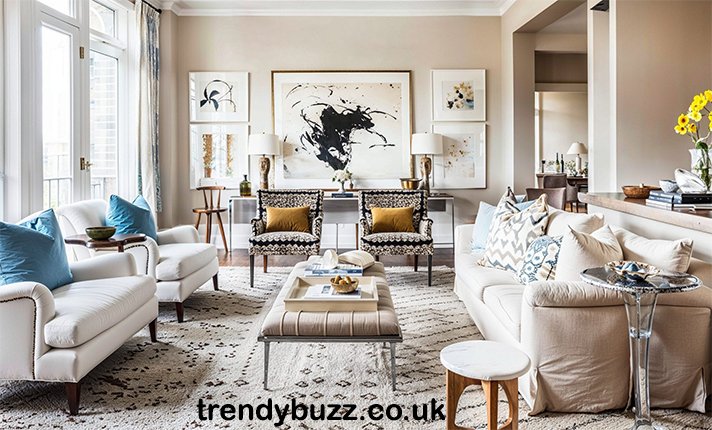Introduction
Interior designers shape how we live. They balance form and function, turn vague ideas into clear plans, and manage the many details that make a space useful and beautiful. Good designers blend creativity with technical know-how, and they consider budget, safety, and lifestyle when making choices.
What interior designers actually do
At their core, interior designers plan spaces. They measure and draft layouts, create mood boards, select finishes and furniture, and ensure designs comply with building codes and accessibility rules. Their work spans concept development through execution, often coordinating with contractors, electricians, and suppliers to bring a project to life. This mix of design thinking and project management is what separates professional interior designers from decorators.
Why design trends matter and what’s coming
Trends help inform fresh ideas without forcing a one-size-fits-all approach. In 2025, designers are leaning into richer color stories, including earthy greens, deep mauves, and jewel tones, while bold accents like chartreuse are making unexpected comebacks. Color swathing, where an entire room is enveloped in a single hue, is also gaining traction as a way to create immersive spaces. At the same time, classic comforts reappear through revived preppy and heritage styles layered with contemporary textures.
Sustainability as a baseline
Sustainability is no longer optional. Designers increasingly specify reclaimed wood, low-VOC paints, biodegradable or recycled textiles, and durable materials that age well. Beyond materials, sustainable design considers energy efficiency, indoor air quality, and longevity, favoring choices that reduce environmental impact while improving occupant health. For many clients, sustainability now ranks as highly as style.
Tools and technology designers use
Modern designers rely on tools that help clients see the result before construction begins. Digital mood boards, 3D renderings, virtual reality walkthroughs, and BIM or CAD drawings allow precise planning and fewer surprises on site. These tools also speed approvals and let designers test materials and lighting in simulated conditions. Using technology well shortens timelines and improves accuracy during installation.
Accessibility and regulations
Good design must meet local codes and accessibility standards. Interior designers read and prepare technical drawings, specify compliant fixtures, and coordinate with engineers and inspectors to ensure safe installations. Overlooking regulations can delay projects and increase costs, so professionals treat compliance as a core part of the brief.
Real-world example
Imagine a small flat with poor lighting and awkward circulation. A designer redraws the layout to open sightlines, specifies layered lighting to reduce glare, selects scaled furniture for better flow, and chooses hardwearing textiles for daily life. The result feels larger, lighter, and easier to live in. That transformation is often more about planning and choices than about expensive items.
Skills and qualities to look for in a designer
A good interior designer combines creativity, technical competence, and communication skills. Key abilities include space planning, visual presentation, budgeting and cost estimating, material knowledge, and an understanding of regulations. Equally important is listening. Designers who ask the right questions about how you live, work, and relax will deliver outcomes that feel personal rather than staged.
How to choose and hire the right interior designer
Start with a clear brief: know your budget, timeline, and nonnegotiables. Review portfolios and look for work that feels closest to your style. Ask about the designer’s process, typical fees, and who handles sourcing and installation. Check references and request a sample layout or mood board as part of the initial consultation. Agree on a written contract that spells out scope, milestones, payment schedule, and conflict resolution.
Costs and pricing models
Design fees vary. Common models include hourly rates, flat project fees, a percentage of project cost, or cost-per-square-foot pricing. Some firms work on retainer, others combine a fixed fee with markups on goods. Clear communication about scope and trades keeps surprises low. When designers offer trade discounts, confirm whether those savings will be passed to you or retained.
Small projects, big impact
You do not need a full renovation to benefit from a professional. Reworking a layout, improving lighting, choosing scale-appropriate furniture, and simplifying material choices can transform a room while staying budget friendly. Many designers now offer tiered services or virtual consultations, which can reduce cost and speed up decision making.
Working with a designer: what to expect
Expect a process that moves from discovery to concept to implementation. Early stages focus on needs and constraints. The designer then presents options, refines choices with you, and prepares technical drawings when needed. During construction or installation, the designer coordinates deliveries and trades and handles on-the-ground decisions to maintain design intent. Regular check-ins and a single point of contact reduce friction.
Quick checklist for your first meeting
- Define your budget range and timeline.
- Bring images of interiors you like and dislike.
- Note daily routines, storage needs, and accessibility concerns.
- Ask about fees, deliverables, and who will manage procurement.
- Request a rough schedule and a sample of recent work.
Future-proofing your space
Designers who plan for flexibility help homes adapt to changing needs. Strategies include multipurpose furniture, adaptable lighting, neutral backdrops with changeable accents, and durable finishes. These choices reduce the need for frequent overhauls and support sustainability goals by stretching the life of materials and furniture.
Ready to start
Prepare a simple brief, measurements, and five photos of the space. A clear brief saves time and avoids scope creep, and it helps the designer provide a realistic quote.
Conclusion
Interior designers do more than make rooms look good. They reconcile aesthetics with safety, budget, and daily life. With trends shifting toward richer palettes and sustainability as a default, hiring the right designer can make your investment last longer and feel more personal. Start with research, ask precise questions, and choose a professional whose process fits your expectations. The right partnership can turn a functional space into a place that truly works for you.
